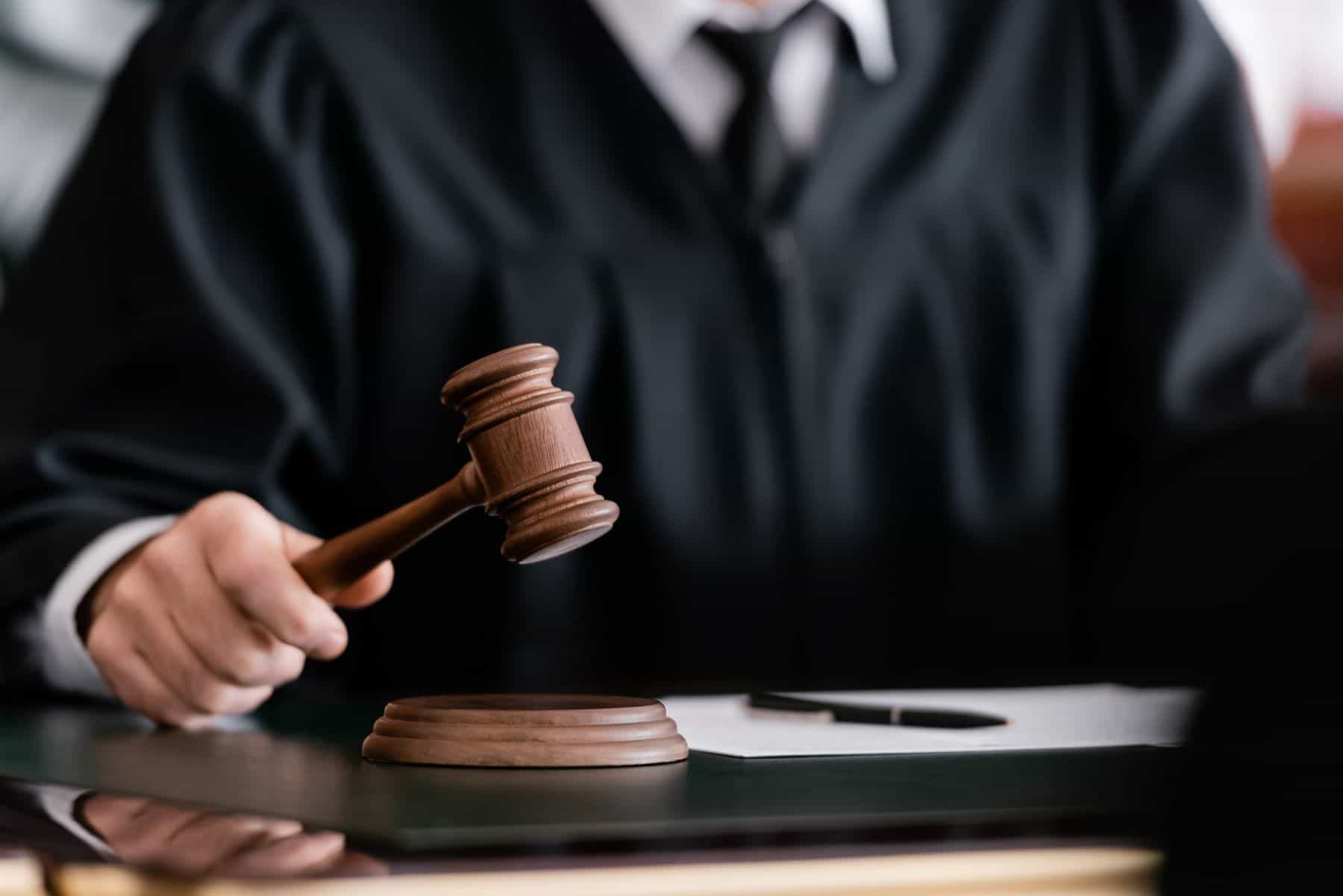Effectively Challenge an Opposing Expert Witness
Learn how to effectively challenge an opposing expert witness by understanding the Daubert standard, exploring the basics of expert witness challenges, and mastering the strategies and timing for a successful Daubert challenge.
Updated on
Since 1993, the standard articulated in Daubert v. Merrell Dow Pharmaceuticals has overridden the older Frye standard in federal and many state courts. Daubert makes the judge responsible for determining how reliable an expert’s conclusions may be, based on the use of “scientific methodology.”
Understanding the Basics of Expert Witness Challenges
Challenging expert witnesses is essential in many legal cases. Juries tend to be impressed by an expert’s credentials and ill-equipped to assess the expert’s background, expertise, or methodologies. A challenge exposes any weaknesses in the expert’s background or approach, contextualizing the expert for the court and jury.
What Constitutes an Expert Witness?
Expert witness testimony is governed by Federal Rule of Evidence 702, which states that witnesses qualified by “knowledge, skill, experience, training, or education” may testify to their expert opinions if:
- The knowledge will assist the trier of fact ether understand the evidence or make a fact determination at issue;
- The expert’s testimony is “based on sufficient facts or data”;
- Reliable principles and methods were used in coming up with the opinion; and
- The principles and methods were applied in a manner that is reliable in the case at hand.
When assessing the testimony pursuant to Rule 702, courts may consider several factors, including:
- Whether the theory has been and can be tested;
- Whether the method has been through the rigors of peer review and publication;
- The error rate, if known, or the potential error rate;
- Standards that exist for the method, as well as the maintenance of the standards during the testing at issue; and
- Whether there is widespread acceptance in the scientific community.
These factors are articulated in Daubert and constitute the “Daubert standard.”
Three Types of Daubert Challenges
Daubert opens up opportunities to challenge expert witnesses via three primary routes.
Questioning the Expert’s Qualifications
Lawyers should vet experts in every single case. Review the expert’s CV and confirm its contents, including degrees earned, publications written, and other credentials. Compare these with learned treatises or consult other experts in the field to determine how the expert’s CV stacks up against other recognized experts.
Challenging the Expert’s Methods
Any scientific testing should be done in accordance with written protocols. An expert hired for your case can help determine whether:
- Sound scientific principles support the protocols;
- The analyst followed the protocols;
- The expert based their conclusions on objective data.
Examine documentation from scientific testing as well. Spotty or missing documentation opens up the process to a Daubert challenge.
Attacking the Scientific Basis of the Expert’s Testimony
Scientific discoveries can refine, alter, or even debunk previous findings and methods. Some fields continue to rely on assumptions for which there may be little or no evidence. Do not trust longevity as a basis for scientific rigor or veracity; if peer-reviewed studies are scarce or nonexistent, consider the field ripe for a Daubert challenge.
Preparing to Challenge an Expert Witness

When preparing to challenge an expert witness:
Research the Expert’s Background and Credentials
Know your expert. Expert Radar can find all of an expert's publications, licenses, certifications, previous litigation activity and prior Daubert challenges against them along with much more.
Gather Evidence to Undermine the Expert’s Credibility or Methodology
Evidence may include testimony from other experts, published standards for scientific investigation, studies or other publications debunking the expert’s chosen methods of analysis, and learned treatises outlining the currently accepted standards, methods, and reasoning used in the field.
Formulate Key Questions and Cross-Examination Strategies
As you work, consider the key issues and weak points in the case. Plan key questions and cross-examination to focus on the essentials.
Hire an Expert to Document the Opposing Expert’s Errors
Finally, an expert witness can help you spot and explain errors from an opposing expert. Back up your expert with learned treatises and other materials to avoid a “he said, she said” situation. An expert witness search service can help you find the right expert.
When to Launch a Daubert Challenge
While a Daubert challenge can be made at any point in a case, it is wise not to make a challenge too late in the trial. In Alfred v. Caterpillar, Inc., 262 F.3rd 1083, 1087 (2001), the Tenth Circuit held that a Daubert challenge raised late in the trial process can be denied.
As a Pre-Trial Motion
Objecting to an expert pre-trial can help to avoid a trial altogether. If the opposing side’s case depends on the expert’s testimony and your challenge succeeds, the case may end without the need for trial.
As Part of Summary Judgment
If a successful challenge would clinch summary judgment for your client, challenging an expert as part of a summary judgment motion may be effective.
As a Motion in Limine
When part or all of an opposing expert’s testimony ought not to appear before a jury, a motion in limine can provide effective grounds for a Daubert challenge.
As an Objection When Testimony is Given
Some expert witnesses are best challenged with a scalpel rather than a sledgehammer. Objecting when testimony is given allows you to focus on key issues with the expert’s testimony, methods, or credentials.
As a Post-Trial Motion
Proper preparation should prevent any surprises from an opposing expert witness on the stand. Should a surprise occur, however, a post-trial motion can raise a challenge to an expert witness and preserve any key issues for a potential appeal.
Always refer to the court’s scheduling order to determine the deadlines to any challenges to the admissibility of expert testimony.
Navigating Daubert Hearings
In addition to being available at nearly any point in a case, Daubert challenges are also flexible. The extent and content of the challenge can be modified to suit the needs of the moment.
What to Expect During a Daubert Hearing
During a Daubert hearing, know your expert. Have a full grasp of their background and any expert reports.
Understand your judge’s stance. Look at their history of Daubert challenge decisions. Try to spot patterns - does the judge grant motions the longer they get, or deny them? Request a hearing length that best suits the strength of your case.
How to Present Your Challenge Effectively to Meet Legal Standards
Focus on competence, relevance, and reliability - or lack thereof. Judges tend to prefer that the value of conclusions be decided at trial. By demonstrating that the expert’s competence or results cannot be trusted, however, you undermine confidence in any conclusion that the expert might reach.
What Happens After a Challenge?

There can be benefits both to winning and to losing a Daubert challenge. Weighing these benefits can help you strategize for any outcome.
Winning a Challenge
Benefits of winning a Daubert challenge include weakening your opponent’s case or, in some instances, outright dismissal. These results can produce a more favorable resolution for your client - and in some instances, a stronger precedent for use in future cases.
Losing a Challenge
Benefits to a lost Daubert challenge may include a practice run at presenting and challenging expert witness evidence. You gain insight into what judges and juries may or may not understand when facing complex scientific principles, which can allow you to present your case in chief more effectively. A challenge also signals to the other side that you are alert and ready to work this case to its fullest extent.
Daubert Challenge Case Studies
Here are two examples of Daubert challenges in action. The first relies on a motion in limine; the second on challenging an expert through a Daubert hearing
The Paper Challenge
An opposing expert’s CV clearly documents her education, training, and experience in forensic DNA typing. Much of her testimony focuses on these areas. However, during a deposition, the witness responds to some accident scene photos with the comment, “Based on this photo, I believe the victim’s heart was beating for a few seconds after decapitation.”
A written motion in limine can present a Daubert challenge. Here, the motion in limine can detail the witness’s education, training, and experience - and point out that cardiac activity post-decapitation lies outside the scope of her expertise.
The Challenge With Testimony
An opposing expert purports to focus on determining the causes and nature of arson. The expert’s report concludes that the fire was deliberately set, using technical-sounding terms like “depth of char,” “spauling,” and “crazed glass.”
A Daubert hearing can prove useful here. The goal of the hearing is not to challenge the conclusion that the fire is an example of arson. Rather, the goal is to debunk popular myths around the use of factors like depth of character, spauling, and crazed glass to determine whether arson occurred.
Including testimony from an expert witness, several learned treatises, or references to NFPA 921: Guide for Fire and Explosion Investigations can help you demonstrate that the opposing expert’s methods, terminology, and approach are not rigorous, accepted science that conforms with current standards in the field - and thus that the opposing expert’s conclusions cannot be trusted no matter what they happen to be.
Expert challenges play an important role in assessing the credibility and usefulness of expert witnesses and their opinions. Approach expert challenges with thorough preparation and strategic planning to maximize the value of the challenge and its odds of success.
About the author
Dani Alexis Ryskamp, J.D.
Dani Alexis Ryskamp, J.D., is a multifaceted legal professional with a background in insurance defense, personal injury, and medical malpractice law. She has garnered valuable experience through internships in criminal defense, enhancing her understanding of various legal sectors.
A key part of her legal journey includes serving as the Executive Note Editor of the Michigan Telecommunications and Technology Law Review. Dani graduated with a J.D. from the University of Michigan Law School in 2007, after completing her B.A. in English, summa cum laude, in 2004. She is a member of the Michigan State Bar and the American Bar Association, reflecting her deep commitment to the legal profession.
Currently, Dani Alexis has channeled her legal expertise into a successful career as a freelance writer and book critic, primarily focusing on the legal and literary markets. Her writing portfolio includes articles on diverse topics such as landmark settlements in medical negligence cases, jury awards in personal injury lawsuits, and analyses of legal trial tactics. Her work not only showcases her legal acumen but also her ability to communicate complex legal issues effectively to a wider audience. Dani's blend of legal practice experience and her prowess in legal writing positions her uniquely in the intersection of law and literature.
Subscribe to our newsletter
Join our newsletter to stay up to date on legal news, insights and product updates from Expert Institute.
Sign up nowA Sample Voir Dire: How To Qualify An Expert Witness
Download free white paperChallenging Opposing Experts: Advanced Research Techniques
Download free white paperCross Examining Expert Witnesses: The Ultimate Guide
Download free white paper
Subscribe to our newsletter
Join our newsletter to stay up to date on legal news, insights and product updates from Expert Institute.



